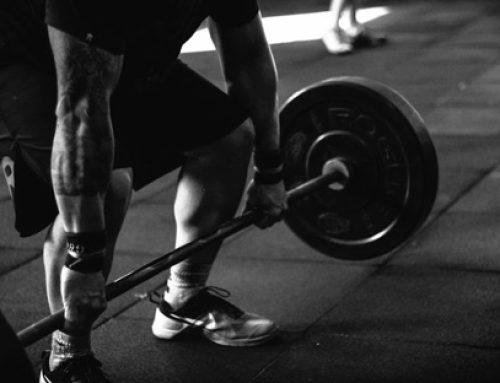Welcome my fellow Weight Lifting Warriors, to the ultimate guide on how to safely pump iron with a sneaky little hernia. Yes, you heard that right! We know that getting that swole on is extremely important to us all, but we also understand that nobody wants to deal with the beast that is an abdominal hernia. Fear not, for we have come up with safe and effective techniques to make sure that you keep those gains coming while keeping that pesky little hernia securely in place. Get ready to flex those muscles and wipe away those tears of laughter as we navigate the world of weight lifting with a hernia.
Contents
- 1 Weight Lifting with Hernia: Navigating Safe and Effective Techniques
- 2 Understanding Hernia: Causes, Symptoms, and Treatments
- 3 The Pros and Cons of Weight Lifting with Hernia: Weighing the Risks
- 4 The Dos and Don’ts of Weight Lifting with Hernia: Safe Techniques
- 5 Creating an Exercise Plan: Designing a Hernia-Friendly Weight Lifting Routine
- 6 To Lift or Not to Lift – That is the Hernia Question!
When it comes to weight lifting with a hernia, it’s safe to say you don’t want to feel like you have a bowling ball trying to escape from your belly button. But fear not, my fellow gym rats! There are ways to navigate this treacherous territory with safe and effective techniques.
First things first, always consult your doctor before embarking on your weight lifting journey. You don’t want to rip open your gut like a piñata or worse, have a “Hulk smash” moment in the gym. Your doctor can assess the severity of your hernia and give you recommendations for weight limits and exercises to avoid.
Once you have your doctor’s clearance, it’s time to hit the gym with confidence! Here are a few tips and tricks to keep in mind as you navigate the world of weight lifting with a hernia:
– Focus on low-impact exercises: Avoid exercises that cause excessive strain on your abdominal muscles, such as squats, deadlifts, and heavy bench presses. Instead, opt for low-impact exercises like yoga, Pilates, and swimming.
– Use proper form: This is crucial for people with hernias, as improper form can cause additional strain on your abdominal muscles. When lifting weights, make sure to engage your core muscles and lift with your legs, not your back. And always remember to exhale during the exertion phase of the lift.
– Don’t overdo it: This is sound advice for any weight lifting routine, but it’s especially important for people with hernias. Gradually increase your weight and reps over time and always listen to your body. If you feel pain or discomfort, stop immediately and reassess your form and weight limits.
So, fear not fellow belly-bearers! You too can lift weights and feel like a superhero in the gym. Just remember to consult your doctor, focus on low-impact exercises, use proper form, and don’t overdo it. Happy lifting!
Understanding Hernia: Causes, Symptoms, and Treatments
The Culprit behind Hernia
Do you know what causes a hernia? No, it’s not your ex who left you for someone else. Hernia occurs when an organ, fatty tissue, or muscle squeezes through a weak spot or tear in the abdominal wall. You know what else can make a weak spot? Trying to hold your pee in traffic. Yup, your bladder can also be the culprit behind hernia. So, stop holding your pee in, okay?
Unpleasant Symptoms of Hernia
Being a hernia sufferer is not a walk in the park. Symptoms include pain or discomfort when you lift something heavy, cough, or bend over. It’s like your body is punishing you for trying to be productive or catching a cold. Another unpleasant symptom is the appearance of a bulge or swelling in the affected area. Remember that episode in Friends where Ross suffered from a hernia, and Chandler made fun of him for “growing a third nipple?” Yeah, that situation may not be far off from reality.
Treatments for Hernia
If you have a hernia, don’t panic. There are treatment options available. Depending on the severity, it can either be as simple as wearing a supportive garment or as extreme as surgery. But before you go under the knife, make sure to consult your doctor. Meanwhile, avoid activities that can trigger your hernia symptoms. Like instead of lifting heavy grocery bags, try lifting a spoonful of peanut butter to the mouth. Remember, sometimes, you need to give yourself a break. And in the case of hernia, you also need to give your muscles a break.
The Pros and Cons of Weight Lifting with Hernia: Weighing the Risks
Before we lift the weight of this topic, let’s flex our knowledge on what a hernia is. A hernia is a protrusion of an organ or tissue through a weak spot in the surrounding muscle or tissue. Weight lifting can cause a hernia to worsen or trigger a new hernia. But let’s be real, we don’t skip the gym just because of a little protrusion.
Let’s break it down. What are the pros of weight lifting with a hernia?
- You’ll look like the Hulk with a baby bump
- You’ll finally have an excuse to wear a lifting belt as an accessory
- You’ll have a valid reason to grunt excessively while lifting and intimidate other gym-goers
Now onto the cons:
- You may pop your hernia and cause intense pain
- You may need surgery and be out of the gym for weeks
- You may have to explain to your doctor how you got a hernia and have them judge your lifting form
At the end of the day, weight lifting with a hernia is a risky business. But, if you choose to lift heavy anyways, just remember to consult with your doctor, listen to your body, and maybe invest in some high-waisted gym shorts to hide your hernia.
The Dos and Don’ts of Weight Lifting with Hernia: Safe Techniques
When it comes to weight lifting with a hernia, a few dos and don’ts can make all the difference between a safe workout and a major injury. Here are some techniques you should and should not try:
Do: Warm up properly before lifting. This means stretching your muscles, taking a brief walk, and doing some light cardio to get your blood flowing. A properly-warmed body is less likely to strain or pull a muscle, putting less pressure on your hernia.
Don’t: Lift too much weight. We all want to be the Hulk at the gym, but pushing yourself too hard can cause significant damage to your already weak abdominal muscles. Pay attention to your body and if you feel a sharp pain, stop immediately.
Do: Use proper form when lifting. Make sure to engage your core and use your legs to lift, rather than putting all the pressure on your arms. This will place less strain on your hernia and reduce your risk of tearing or damaging your muscles.
Don’t: Hold your breath. This is a common mistake when lifting weights but can be especially dangerous when you have a hernia. Holding your breath increases the pressure inside your abdomen, which can place extra stress on your weakened muscles. Make sure to breathe steadily throughout your workout.
By following these dos and don’ts, you can safely and effectively build muscle without aggravating your hernia. Remember to always listen to your body and stop if you feel any severe discomfort or pain. Happy lifting!
Creating an Exercise Plan: Designing a Hernia-Friendly Weight Lifting Routine
So, you have a hernia, and you’re still determined to pump iron like a boss? That’s the spirit! However, you need to tailor your weight lifting routine to prevent any further complications. Here are a few tips to help you design a hernia-friendly weight lifting routine:
- Start with low weights: Don’t be ashamed to start with baby weights. Hernia surgery weakens your abdominal muscles, and lifting heavy weights could lead to the hernia returning. Start slow, and gradually increase the weights as your muscles get stronger.
- Avoid exercises that increase intra-abdominal pressure: These exercises place extra pressure on the abdominal muscles, which could worsen your hernia. Exercises to avoid include squats, deadlifts, and overhead presses. Instead, opt for isolation exercises like bicep curls, tricep extensions, and lateral raises.
- Don’t forget to engage your core: A strong core can help prevent hernias from recurring. Incorporate exercises that engage your core muscles, such as planks, Russian twists, and bicycle crunches. Just remember to keep your breathing and movements slow and controlled.
With these tips in mind, you can safely design a weight lifting routine that won’t aggravate your hernia. Remember, slow and steady wins the race. You didn’t get your hernia overnight, so don’t expect to fix it overnight either. Be patient, work hard, and you’ll be back to lifting like a pro in no time!
To Lift or Not to Lift – That is the Hernia Question!
Now that you’re armed with the tips and tricks for safe weight lifting with a hernia, it’s time to hit the gym and show your muscles who’s boss! But remember, always listen to your body and don’t push yourself beyond your limits. And if you ever feel like you’re in need of a break, well, you can always lift your remote control and binge-watch your favorite show instead. Hey, it’s still lifting, right? So go forth and lift, but lift carefully my friends!








Leave A Comment